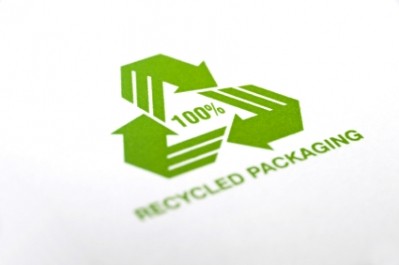Still challenges to overcome for recycled fibre packaging - research

The 31-page report by the Sustainable Packaging Coalition (SPC) looked at using recycled paper fibre in 20 retail sectors.
A project of eco-friendly research firm GreenBlue, the report focusses on the challenges and opportunities when using recycled fibre.
Challenges identified included the breakdown of fibre length and strength during repulping - limiting the number of times it can be recycled, demand and supply imbalance, single stream recycling increasing contamination of existing fibre streams and price fluctuations in virgin and recycled fibre.
Guidelines for Recycled Content in Paper and Paperboard Packaging outlines cereal and pasta boxes, trash bag cartons, pizza boxes and paperboard coffee canisters as recycling opportunities.
Conducted last year, it found a 71.8% recovery rate for paper and paperboard packaging with use of post-consumer recycled (PCR) content supporting the recovered material market.
Uptake will grow
Katherine O’Dea, senior fellow and director of advisory services at GreenBlue, told FoodProductionDaily.com that she believes there will be a rise in the use of recycled content in food and beverage packaging.
“Increasing the use of recycled content is certainly a focus in other developed markets – particularly Europe, however, it can’t be assumed that the technical considerations and the market and availability data would apply in those markets.
“Europe for example has a very different packaging recovery system, so the amounts recovered are likely to differ from the US meaning the availability of recycled fibre may be greater in most EU countries,” O’Dea said.
The research found cereal boxes and grocery bags contained 90 to 100% of recycled content, while only five packaging applications did not use any and the project’s working group believed: “the ability to introduce recycled content into these applications in the short-term is considered to be low.”
It added: “Three of these applications—over the counter pharmaceutical boxes, software boxes, and frozen food boxes—are frequently made from solid bleached sulfate board or coated unbleached kraft with performance and/or aesthetic requirements that are difficult to meet using high levels of recycled content.
“Butcher wrap, used to wrap meat and other food products, must be able to withstand considerable exposure to liquids and meet strict FDA regulations, making the use of recycled content quite challenging and impractical. Similarly, microwave popcorn bags must be virtually contaminant free as, for example, any metal flakes in the fibre,” added the report.
The report was completed in collaboration with packaging companies such as Amcor, Graphic Packaging International, International Paper and Sonoco.
No predetermined outcomes
O’Dea added they went into the project with no preconceived notions or ideas but to create a set of guidelines to help industry players.
“We thought the best way to do that was to be able to talk about specific requirements, challenges and possible solutions related to actual packaging applications,” she said.
“We also hope the guidelines will spur more and better communications across fibre-based packaging supply chain.”
A full copy of the report can be found here for $125 (€95).









